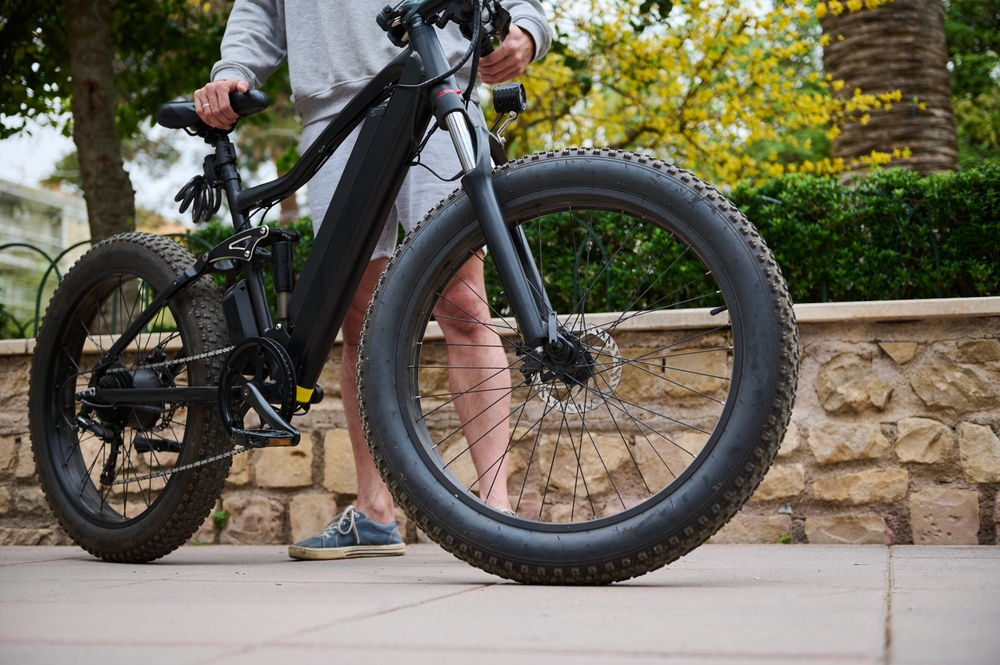Essential Guide to Electric Bikes: What You Need to Know & Top Resources for 2025
Electric bicycles (e-bikes) have revolutionized personal transportation by combining traditional cycling with electric assistance. As we approach 2025, these vehicles continue to gain popularity for commuting, recreation, and fitness. Whether you're considering your first e-bike purchase or looking to upgrade, understanding their core technology, features, and maintenance requirements is essential. This comprehensive guide covers everything from the basic types of electric bikes to their costs, regulatory considerations, and where to find helpful resources.

Understanding Electric Bike Types And Their Features
Electric bikes come in various configurations designed for different riding purposes. Class 1 e-bikes provide pedal assistance up to 20 mph, making them ideal for casual riders and commuters. Class 2 models include throttle-controlled motors that can power the bike without pedaling, also limited to 20 mph. Class 3 e-bikes, often called speed pedelecs, offer pedal assistance up to 28 mph and are designed for longer commutes or more experienced riders.
Different frame types serve various needs: city/commuter e-bikes feature upright riding positions and practical accessories; mountain e-bikes (eMTBs) come with robust suspension systems and wider tires for off-road capability; folding e-bikes prioritize portability for mixed-mode commuting; and cargo e-bikes include extended frames or attachments for hauling goods or children. Most contemporary e-bikes feature integrated displays showing speed, battery level, and assistance modes, while some offer smartphone connectivity for navigation and ride tracking.
Evaluating Battery Life And Charging Options
Battery technology forms the heart of any electric bike’s performance. Most modern e-bikes use lithium-ion batteries ranging from 250Wh to 750Wh capacity. A higher watt-hour rating generally translates to longer range, though actual distance varies based on rider weight, terrain, assistance level, and weather conditions. Under optimal circumstances, expect 20-80 miles per charge depending on the battery size and factors mentioned.
Charging infrastructure continues to improve for 2025 models. Standard charging times typically range from 3-6 hours for a full recharge using included chargers. Fast-charging options are becoming more common, allowing 50-80% capacity in 1-2 hours. Removable batteries provide convenient charging flexibility, especially for apartment dwellers or those without garage access. When evaluating battery systems, consider not only capacity but also the battery management system (BMS) quality, which protects cells and maintains performance over the battery’s projected 500-1000 charge cycles.
Exploring Safety Standards And Regulations
Electric bike regulations vary significantly by region and continue to evolve as their popularity increases. In the United States, the federal government defines e-bike classes, but states maintain individual regulatory authority. Most states have adopted the three-class system, though specific rules regarding helmet requirements, minimum rider age, and where different classes can operate vary considerably.
Safety certification standards provide important quality assurance. Look for UL certification for electrical components and compliance with standards like EN15194 in Europe or equivalent testing protocols in other regions. Quality e-bikes should include integrated lighting systems, reliable hydraulic disc brakes to handle higher speeds, and motors with appropriate power cut-offs when brakes are applied. For 2025 models, advanced safety features like automatic lights, enhanced visibility components, and integrated turn signals are becoming increasingly standard on mid-to-high-end models.
Comparing Costs: Ownership Vs. Traditional Biking
Electric bikes represent a higher initial investment than conventional bicycles, but their long-term value proposition often balances this premium through reduced transportation costs and increased utility.
| Category | Entry-Level E-bikes | Mid-Range E-bikes | Premium E-bikes | Traditional Bikes |
|---|---|---|---|---|
| Purchase Price | $800-$1,500 | $1,500-$3,000 | $3,000-$8,000+ | $300-$2,000 |
| Annual Maintenance | $150-$300 | $200-$400 | $250-$500 | $100-$200 |
| Battery Replacement (every 3-5 years) | $300-$500 | $400-$700 | $500-$1,000 | N/A |
| Electricity Cost (annual) | $20-$40 | $20-$40 | $20-$40 | N/A |
Prices, rates, or cost estimates mentioned in this article are based on the latest available information but may change over time. Independent research is advised before making financial decisions.
Beyond purchase price, e-bike ownership includes maintenance costs for both traditional components (tires, brakes, drivetrain) and e-bike-specific elements (motor service, battery replacement). However, these costs are often offset by savings on fuel, parking, and public transit. Many riders report that e-bikes enable them to replace car trips more effectively than traditional bikes, potentially eliminating the need for a second vehicle in multi-person households.
Discovering Resources For Maintenance And Repair
As electric bikes become mainstream, support resources continue to expand. Manufacturer-authorized service centers provide the most reliable support, particularly for proprietary electronic systems. For riders in areas without dedicated e-bike shops, many traditional bike retailers have expanded their technical capabilities to service electric models. Online resources have also proliferated, with platforms like Park Tool and Bosch offering detailed e-bike maintenance tutorials.
For DIY maintenance, focus on traditional bicycle components that remain similar to conventional bikes—tires, chains, brakes—while approaching electronic components with appropriate caution. Several manufacturers now provide online diagnostics tools and troubleshooting guides specific to their systems. Mobile repair services specializing in e-bikes are emerging in many urban areas, offering at-home maintenance for riders without transportation alternatives during service periods. For 2025, expect expanded dealer networks and more sophisticated remote diagnostic capabilities enabling technicians to assess system health through smartphone connections.
E-bikes represent a significant evolution in personal transportation, combining sustainability, efficiency, and enjoyment. With proper understanding of the types available, battery considerations, regulatory landscape, and ownership costs, riders can make informed decisions that match their specific needs. As we move toward 2025, continuing advancements in technology promise even more capable and accessible electric bicycles.




